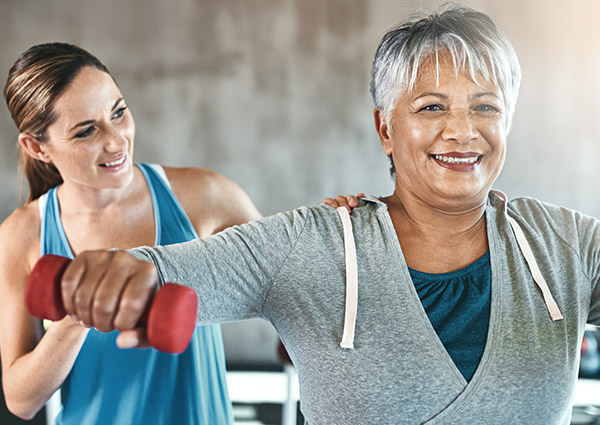
Best Exercises to Build Muscle
Muscles make up between 35-45% of the average body composition and play a vital role in overall health and wellness. While general exercise is necessary, maintaining and strengthening muscle is a critical factor for increasing metabolic health, body weight control and bone strength, while building resilience to stress and disease. Increasing muscle with simple resistance exercises can help you live a longer, healthier life.
Heart disease is the leading cause of death for both men and women. Strength training, exercises using resistance to build muscle, targets issues relating to heart disease such as cholesterol, high blood pressure, obesity, diabetes and inactivity. Strength exercises should be an integral part of your fitness routine to build muscle, boost metabolism and maintain overall health and wellness.
When first starting out with strength training exercises, be cautious when it comes to the amount of weight you use and the rate and intensity of your workout. If you perform heavy weight training too intensely, it could damage your muscles. If your body isn’t used to exercise, it’s best to take it slow to give your body time to adjust. Start with smaller weights or movements and gradually add more resistance to your training.
Warm Up and Cool Down
Always remember to warm up and cool down before and after exercising, especially when focusing on muscles. Warming up before a workout prevents injuries and loosens the joints to increase blood flow to the muscles. Cool downs help to prevent dizziness or fainting. They also gradually lower your heart rate and body temperature and can aid in reducing muscle soreness. Pre- and post-workouts may involve stretching or jogging.
Push-Ups
Push-ups target the arms, back, abs, shoulders, legs and hips. Position your hands directly under your shoulders and place your feet hip-width apart. Be sure to keep your elbows close to your body as you lower and keep your neck in line with your shoulders. For a more challenging exercise, gradually increase the amount of reps and frequency.
Squats
Typically considered a leg exercise, squats essentially work all of the muscle groups in the body. Position your feet shoulder-width apart. Look straight ahead and squat until your thighs are parallel with the floor. Increase difficulty by using weights or dumbbells in each hand at shoulder height, and when you come back up from the squat, lift weights overhead.
Consult with your physician before starting any exercise routine.




